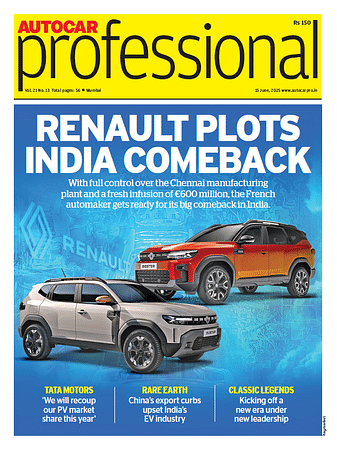Vehicular emission up 40 percent in Delhi-NCR, claims study
emissions from transport and industrial sectors have gone up by 40 percent and 48 percent, respectively.
When it comes to economic growth, India has been one of the fastest growing economies globally, and looks set to continue in the same vein. On the other hand, the rapid growth has led to a not-so-sustainable pace of rapid urbanisation. New Delhi, which is among the most populated cities in the world, has seen pollution levels rising significantly.
In an emissions inventory done by the Pune-based System of Air Quality and Weather Forecasting Research (SAFAR) under the Ministry of Earth Sciences (MoES), has found that vehicles and industries are the biggest contributors to particulate matter (PM) 2.5 emissions in the Delhi-NCR region.
A similar emission inventory was conducted by SAFAR for Delhi-NCR in 2010, too, and a comparison with that shows emissions from the residential sector has fallen by 64 percent due to LPG access even in slums.
On the other hand, the study claims, emissions from the transport and industrial sectors have gone up by 40 percent and 48 percent, respectively. Surprisingly, wind-blown dust, which is often blamed for pollution in Delhi, also reduced by 26 percent between 2010 and 2018.
Among the leading factor's is the rapid and unplanned urban development along with unprecedented population growth has lead to a relentless increase in air pollution in this megacity. Though many state and central government have been encouraging people to use public transport, however, a lack of adequate public transportation system within and outside of Delhi have failed to back this appeal.
Delhi has over 10 million vehicles and the number is going up every year. Of the total vehicular pollution, 40 percent to 45 percent comes from two-wheelers and another 30 percent to 35 percent from four-wheelers.
The study found that the Delhi Metro to a certain extent has been able to motivate people to shift to public transport. The Centre for Development Economics at Delhi School of Economics, in its research, has said that Delhi Metro has resulted in reduced levels of two important vehicular pollutants - nitrogen dioxide (NO2) and carbon monoxide (CO).
The Delhi Metro is expanding its network further and the work on Delhi Metro phase 4 is also expected to begin by mid-2019. However, Delhi Metro only provides intra-city transport solutions and therefore the inter-city vehicular pollution still remains a challenge.
Sharad Goel, a social activist and environmentalist, said, “Reducing pollution in Delhi and other NCR cities is a herculean task that no one can do single-handedly. Short-term efforts have been put in here and there but a long-term solution is the need of the hour. It requires an all-out effort from the public, government and civic agencies. Improvement in the public transportation and adopting eco friendly mode of transportation holds the key."
"An eco-friendly public transportation system is the need of the hour to give a breather to the lungs of Delhi-NCR. One of the viable high-speed transport systems which will result in this kind of modal shift is the Regional Rapid Transit System," added Goel.
The Regional Rapid Transit System (RRTS) is a rail-based, high-speed transit system with a design speed of 180kph and an average speed of 100kph. Once operational, it is said to be the fastest, most comfortable and safest mode of commuter transport in NCR.
The Delhi-Ghaziabad-Meerut corridor will be the first RRTS to be implemented in India out of the first three corridors planned in phase 1. This corridor is expected to lift the public transport share from the current 37 percent to around 63 percent. As per estimates, the system will significantly reduce pollutants namely PM 2.5 particle by 60,000 tonnes, nitrogen oxide by 475,000 tonnes, hydrocabons by 800,000 tonnes and carbon monoxide by 800,000 tonnes yearly.
RELATED ARTICLES
VinFast’s second plant in Vietnam goes on stream ahead of India factory
Vietnamese EV maker’s second plant in its home market, which has a 200,000 EVs-per-annum capacity, will focus on produci...
Continental exits TBR market in India, shifts focus to car and SUV radials
German tyre manufacturer aims to tap the double-digit market growth opportunity for big SUV and luxury car tyres which w...
New ZF SELECT e-drive platform gives EV makers a choice in 100 to 300 kW range
Modular e-drive platform optimally matches 800-volt overall system and components such as the electric motor and power e...





 By Autocar Professional Bureau
By Autocar Professional Bureau
 29 Oct 2018
29 Oct 2018
 5356 Views
5356 Views









